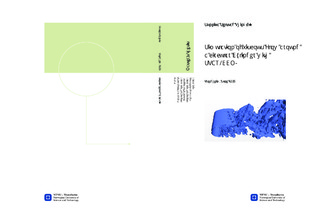| dc.description.abstract | In this thesis, three-dimensional modelling of the flow around a circular cylinder isaccomplished. Two cases are considered. The first (Case 1) is a cylinder in steady,uniform current subjected to Reynolds number 3900. The second case (Case 2) isa cylinder in the vicinity of a rigid wall, also at Reynolds number 3900. For thesecond case, both a boundary layer velocity profile (Case 2a) and a uniform inletvelocity profile (Case 2b) is simulated. The gap-to-diameter ratio, e/D, is set to 0.2 for Case 2. Large eddy simulations (LES) with Smagorinsky subgrid scale (SGS)model are applied to simulate the flow. LES have ability to resolve fine structuresin the turbulent wake of the cylinder. A mesh convergence study is accomplishedfor Case 2a.In the first part of the thesis, the background theory for the case is given in addition to information about the applied pre- and postprocessing tools. In the lastpart of the thesis, the case set-up is described and the results are presented anddiscussed. Velocity profiles in the cylinder wake, hydrodynamic values and pressuredistribution on the cylinder wall are investigated to give a better understandingof the physics in the cases. The results are compared to published experimentalmeasurements and numerical studies.For the first case, the results tend to agree well with published research. The softwaresystem with LES and the Smagorinsky subgrid scale model does successfullysimulate the flow in the boundary layers, the shear layers and the near wake. Theresults are interesting in the context of flow bifurcation for at cylinder subjectedto Reynolds number 3900.The vortex shedding is suppressed for both Case 2a and Case 2b, as expected. Forthe cylinder in Case 2a, a decreased drag coefficient is observed when comparedto Case 1. This is not observed for the cylinder in Case 2b. The two cases areobserved to have an increased mean lift coefficient caused by the vicinity of the wall. However, for Case 2b, the increase is of larger magnitude. This is addressed to the pressure distribution on the cylinder surface. There are also observed differences in the wake statistics for Case 2a and Case 2b. It is concluded that both gap-todiameter ratio and boundary layer thickness have a significant influence on the flow around a circular cylinder. | nb_NO |

